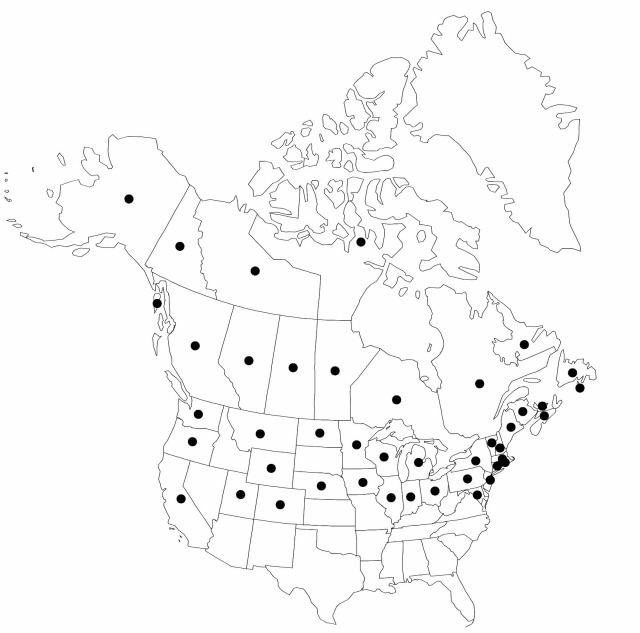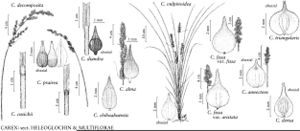Difference between revisions of "Carex diandra"
Cent. Bot. Anmerk., 57 [49]. 1781.
FNA>Volume Importer |
imported>Volume Importer |
||
| Line 8: | Line 8: | ||
}} | }} | ||
|common_names=Carex diandre | |common_names=Carex diandre | ||
| + | |special_status={{Treatment/ID/Special_status | ||
| + | |code=F | ||
| + | |label=Illustrated | ||
| + | }} | ||
|basionyms= | |basionyms= | ||
|synonyms= | |synonyms= | ||
| Line 46: | Line 50: | ||
|publication title=Cent. Bot. Anmerk., | |publication title=Cent. Bot. Anmerk., | ||
|publication year=1781 | |publication year=1781 | ||
| − | |special status= | + | |special status=Illustrated |
| − | |source xml=https:// | + | |source xml=https://bibilujan@bitbucket.org/aafc-mbb/fna-data-curation.git/src/bb6b7e3a7de7d3b7888a1ad48c7fd8f5c722d8d6/coarse_grained_fna_xml/V23/V23_475.xml |
|genus=Carex | |genus=Carex | ||
|section=Carex sect. Heleoglochin | |section=Carex sect. Heleoglochin | ||
Revision as of 21:34, 27 May 2020
Culms (1–)2–90 cm. Leaves: sheaths adaxially whitish, conspicuously red dotted, truncate or convex at mouth, prolonged 0.4–4(–6) mm beyond base of blade; ligules 8–57 mm; foliage leaf blades 14–30(–47) cm × 1–2.5 mm. Inflorescences bisexual, straight, little interrupted, ± compound (short branch at least on most proximal node or, occasionally, unbranched) , 2–5(–6) × 0.6–1.4(–1.7) cm, proximal 0–3 branches slightly overlapping 1 above; basal branch (when present) with 2–12 spikes; proximal internode 3–7(–10) mm. Pistillate scales straw colored or brownish, 1.5–2.7 × 0.9–1.6 mm, as wide as perigynia at base, narrower distally. Perigynia ± spreading, olive to dark chestnut brown, stongly 4–6-veined and finely 2–4-veined abaxially, with narrow median strip extending full length (grooved aspect emphasized by pair of bordering veins), often membranous flap toward apex, narrowly deltoid-ovoid, unequally biconvex, (2–)2.3–2.5(–2.9) × 1–1.4 mm, shiny; beak 0.9–1.1 mm. Achenes broadly compressed-ovoid, 1.4–1.7 × 0.7–1 mm. 2n = 48, 50, 54, 60.
Phenology: Fruiting late May–mid Aug (Sep in Calif).
Habitat: Swampy, marshy, or boggy areas, especially wet meadows, fens, muskegs, floating mats, and peaty or marly shores of lakes and ponds (often in shallow, sometimes brackish water), less often swales, springy thickets, ditches, and wet sandy beaches of nonalkaline lakes
Elevation: 0–2800 m
Distribution

St. Pierre and Miquelon, Alta., B.C., Man., N.B., Nfld. and Labr., N.W.T., N.S., Nunavut, Ont., P.E.I., Que., Sask., Yukon, Alaska, Calif., Colo., Conn., Ill., Ind., Iowa, Maine, Md., Mass., Mich., Minn., Mont., Nebr., N.H., N.J., N.Y., N.Dak., Ohio, Oreg., Pa., R.I., Utah, Vt., Wash., Wis., Wyo., Eurasia (including Iceland), Atlantic Islands (Canary Islands), Pacific Islands (New Zealand).
Discussion
Although common northward (but not at the highest latitudes except in District of Mackenzie and Yukon), this circumboreal sedge is occasional to rare throughout much of its United States range. Carex diandra was reported from Tennessee by J. K. Underwood (1945) and in lists of Tennessee plants on the basis of an old specimen that has been destroyed. H. A. Gleason and A. Cronquist’s (1963, 1991) report for Missouri, quoted in later floras and catalogues, is believed to be erroneous. See comments under C. prairea.
Selected References
None.
